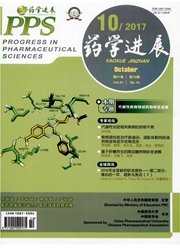

 中文摘要:
中文摘要:
肺动脉高压(PAH)是一种以血管收缩和重构所致的肺血管阻力升高为病理生理学特征的临床综合征,其呈进行性发展,最终可导致右心衰竭甚至死亡,预后差。随着对PAH病理生理学机制的深入研究,该病所涉不同信号通路的关键位点逐渐被认识,相应的靶向药物也不断涌现,它们的应用明显改善了PAH患者的生活质量和预后。综述针对PAH发生发展过程中所涉的3条主要通路:前列环素通路、内皮素通路和一氧化氮-鸟苷酸环化酶-环磷酸鸟苷通路以及其他靶点(如酪氨酸激酶受体和Rho激酶等)而开发的靶向药物研究进展。
 英文摘要:
英文摘要:
Pulmonary arterial hypertension(PAH) is a clinical syndrome characterized pathophysiologically by increased pulmonary vascular resistance caused by vascular contraction and remodeling, which is a progressive course resulting in right heart failure and even death eventually and has a poor long-term prognosis. With a thorough understanding of the pathophysiologic mechanism of PAH, the key loci in different signal pathways involved in PAH have been already known gradually, and the corresponding targeted therapies are emerging, which significantly improve the quality of life and prognosis in PAH patients. In this paper, the progress in targeted therapies directed to the three key pathways—prostaglandin pathway, endothelin pathway and NO-sGC-cGMP pathway, and other targets such as tyrosine kinase receptor and Rho kinase involved in the occurrence and development of PAH was reviewed.
 同期刊论文项目
同期刊论文项目
 同项目期刊论文
同项目期刊论文
 期刊信息
期刊信息
